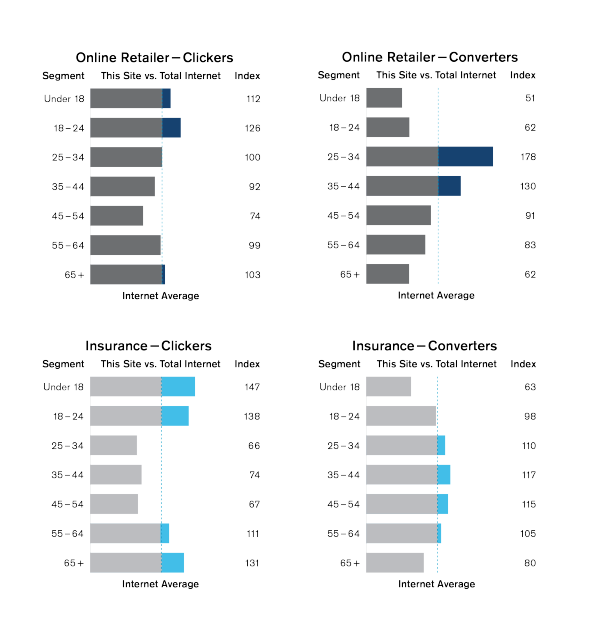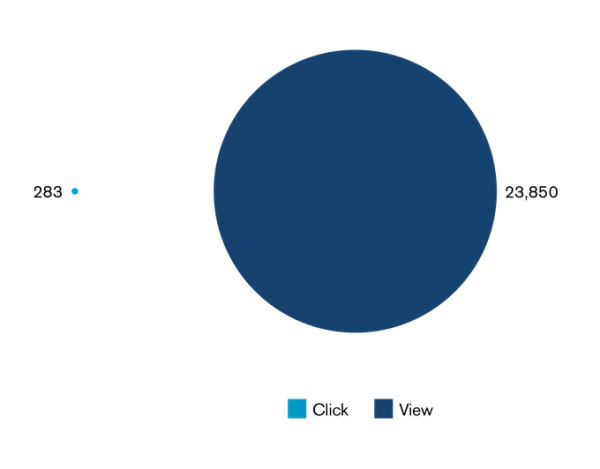Display Campaign Success: Looking Beyond The Click
- Fahad H

- Apr 30, 2013
- 3 min read
The path from clicking a search ad to a conversion — buying a product, downloading a brochure, locating a store — is well understood and widely accepted today. Because a search ad relates to an intent expressed by the person doing the search, click-through rate serves as a good proxy for conversion, and cost-per-click (CPC) is a reliable guide for buying search ads. In search, optimizing for clicks is essentially optimizing for conversions because they’re so closely aligned.
Online display advertising, however, is a different story. People go to websites for information, entertainment and engagement with other people, not to click on ads that send them elsewhere. Only 16 percent of people click on display ads in a given month, indicating that most visitors to a typical advertiser’s site get there some way other than clicking on display ads.
Optimizing for display success is still a worthwhile endeavor. In fact, less than 4 percent of consumers’ online time, less than three minutes per hour, is spent on search. The other 96 percent is spent doing things like reading email, browsing content, watching videos and engaging on social networks.
That 4 percent is invaluable to advertisers, of course. Search accounts for about half of the spending on online advertising in the United States and the United Kingdom; and in some other markets, this number is even higher.
Why Clicks Can Miss The Target For Display
Given the nature of online content consumption, how can advertisers better understand the value of their display investment and optimize accordingly? In search, optimizing clicks is essentially optimizing for conversions because they’re so closely aligned. With display ads, if you optimize for clicks, you get… more clicks. But — and this is important — display ad clickers are often not your converters. We know this because the display clicker audience profile is remarkably consistent, regardless of the campaign.
To illustrate the point, the chart below contrasts the profiles of clickers and converters in two disparate product categories — an online retailer and an insurance company. In both categories, clickers skew toward older and younger Web users. The clickers are much more similar to one another than they are to converters, the people who ultimately make purchases in their respective product categories.

Marketing Is Not A Straight Line
While click-to-conversion marketing has its defenders, display is most appropriately seen as a touch point that stimulates consumer interest along the path to eventual conversion and purchase. The figure below compares a company’s conversions (sales) attained directly through clicks with those that came sometime after consumers saw the ad (view conversions).
There were an astounding 100 times more view conversions for the campaign, with more than 23,000 view conversions and nearly 300 click conversions. Rather than clicking and immediately buying, ad viewers waited, only going to the website later to make a purchase.
This pattern is common for paid search ads, as well. Analysts have noted that, on average, it takes 3.5 days for a customer to convert after an initial click on a paid search link.
Marketing is definitely not a straight line. What does this mean? If you optimize a campaign for click conversions, you’re optimizing to influence the 300 people who clicked through. If you optimize a campaign for all conversions, you’re optimizing for the 23,000 people — the viewers and the clickers combined — who eventually get to the website and make a purchase.

How To Optimize For Conversions
If, like most advertisers, your objective is conversions rather than clicks, you can optimize your display campaign to capture them. Here are four steps to get you started:
Understand the characteristics of your click-based and view-based audiences. Clickers may not be buyers.
Measure view-based conversion volume as well as click-based conversion volume. Buyers are likely to take another look, and perhaps another and another, before deciding to purchase.
Judge your campaign by the conversion rate rather than the click-through rate. Or better yet, use effective cost-per-action (eCPA) to measure the effectiveness of your entire advertising investment, no matter how you’ve chosen to buy it.
Develop and apply a multi-touch attribution approach that includes multiple channels. This involves building a model to better account for the impact of all of the ads that touched your customers along their path to purchase and can help you overcome the shortcomings of click-based and last-touch attribution (attributing all credit to the last ad seen).
Optimizing for clicks is a proven and effective approach for search advertising. But, relying on display clicks to drive conversions is often a dead end. As we’ve illustrated, the consumers most likely to click on display ads are often vastly different from your best customers.
Therefore, if you’re optimizing your campaign for clicks, there’s a good chance you’re actually “anti-optimizing” for sales. Instead, optimize toward your ultimate objective — the campaign conversion rate — rather than toward the click-through rate and focus on developing the necessary systems and skills to understand the true impact of your ad investments throughout your customers’ path to purchase.








Comments